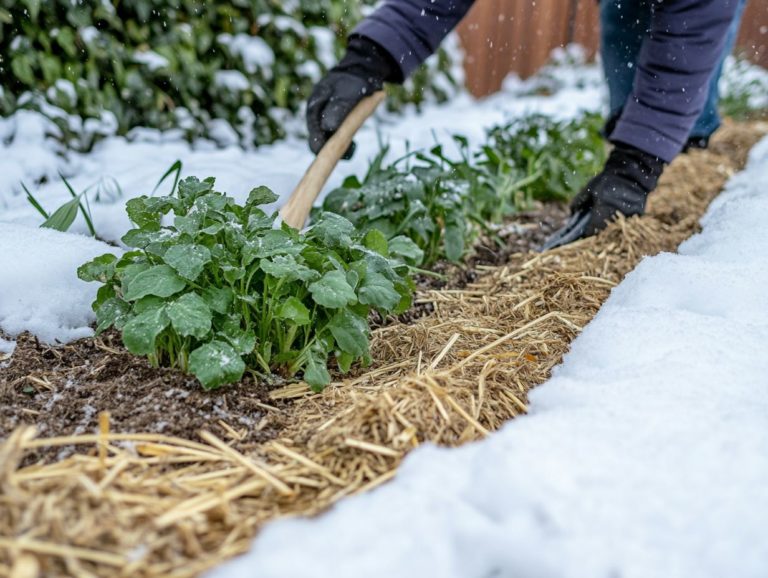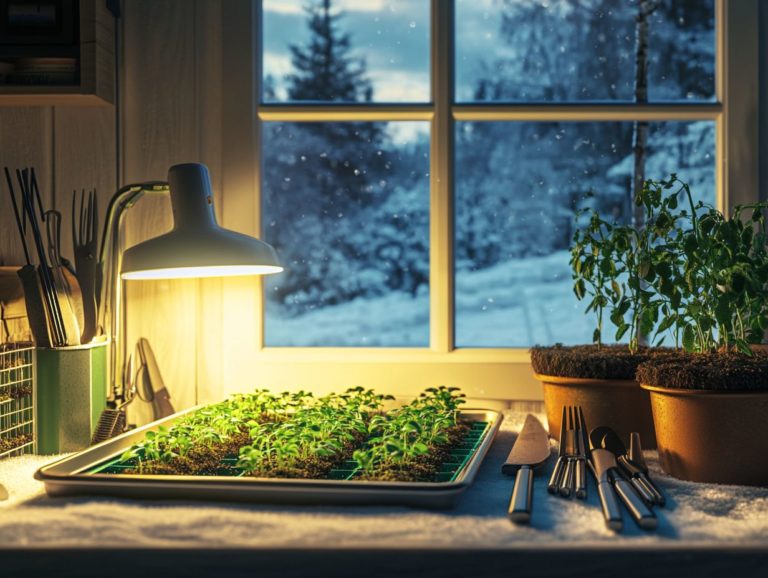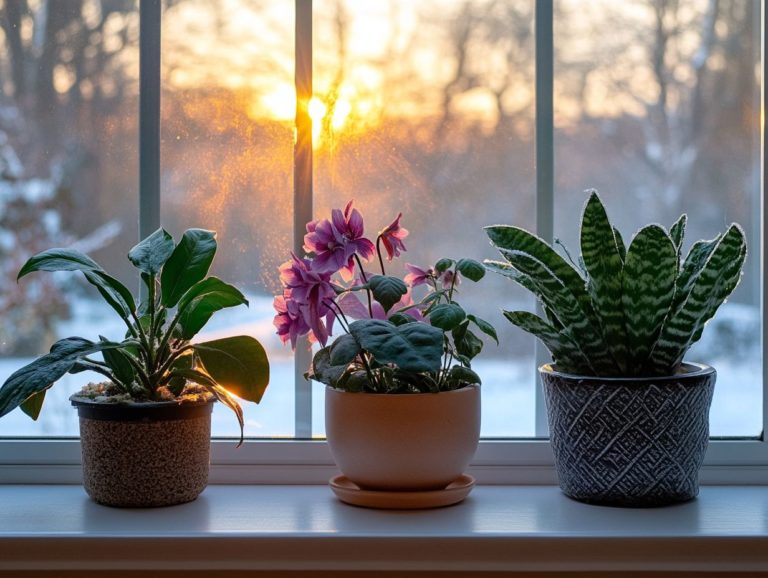What Plants Can Survive Heavy Snow?
As winter wraps the landscape in a pristine shroud of snow, you might find yourself pondering which plants can brave the harsh conditions.
This article delves into the captivating realm of snow-resistant plants, spotlighting native species that flourish under heavy snowfall while offering insights into their remarkable traits.
You ll uncover effective strategies to shield your garden from snow damage, explore cold-hardy varieties, and receive practical tips for cultivating a resilient, snow-friendly haven.
Dive in to discover how you can keep your green space thriving, even during the coldest months!
Contents
Key Takeaways:
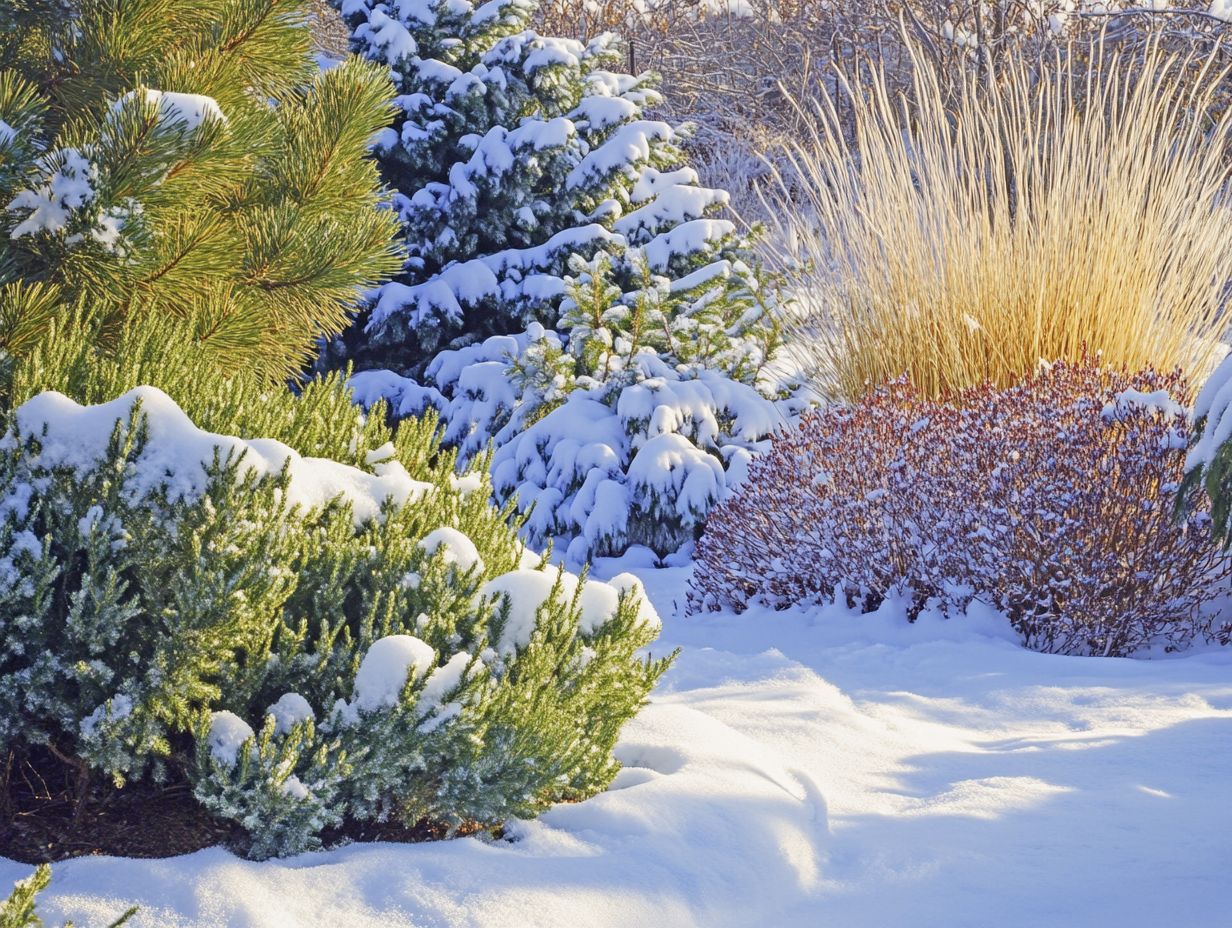
- Choose native plants with strong stems and flexible branches to thrive in heavy snow.
- Use techniques like mulching, wrapping, and staking to prevent snow damage.
- Cold-hardy plants, such as conifers, evergreens, and winterberries, adapt well to snowy climates with proper care.
What Makes a Plant Snow Resistant?
Understanding what makes a plant snow resistant requires you to explore the unique adaptations that allow certain species to thrive in harsh winter conditions.
Take cold-hardy perennials, for example; they exhibit an extraordinary resilience to snow and freezing temperatures.
This ability enables them to withstand the polar vortex and emerge rejuvenated with vibrant spring blooms.
This insight is invaluable for you as a gardener, helping you choose reliable perennials that will not just survive but truly flourish in challenging climates.
Native Plants that Thrive in Heavy Snow
Creating a snow-resistant garden starts with embracing native plants, which offer a sustainable solution perfectly tailored to local winter conditions.
These resilient perennials are naturally equipped to endure heavy snowfall, adding not just beauty but also a variety of plants and animals to your landscape.
They play a crucial role in wildlife gardening, offering essential shelter and nourishment for various species during the colder months.
By incorporating these hardy varieties into your urban gardening practices, you not only enhance a healthy garden ecosystem but also set the stage for vibrant blooms come spring.
Examples and Characteristics
Several hardy plants thrive beautifully in cold climates, and you ll want to consider incorporating them into your garden.
Echinacea purpurea, with its vibrant flowers, and Hylotelephium spectabile, boasting colorful foliage that attracts pollinators, are exemplary choices.
These flowering varieties delight the eyes and have traits allowing them to endure winter.
Echinacea purpurea, or coneflower, truly shines with its striking pink blooms that grace your garden from early summer through fall.
It provides vital nectar for bees and butterflies and prefers well-drained soil and full sun, making it an excellent option for anyone looking to cultivate a lively and resilient landscape.
On the other hand, Hylotelephium spectabile, often referred to as sedum or stonecrop, flourishes in rocky soil and requires minimal water, which underscores its low-maintenance appeal.
This succulent plant adds delightful texture to garden beds with its fleshy leaves while retaining its vibrant color even in frost.
Learn how to create the ideal conditions for these plants, ensuring your garden blooms beautifully throughout the year.
Strategies for Protecting Plants from Snow Damage
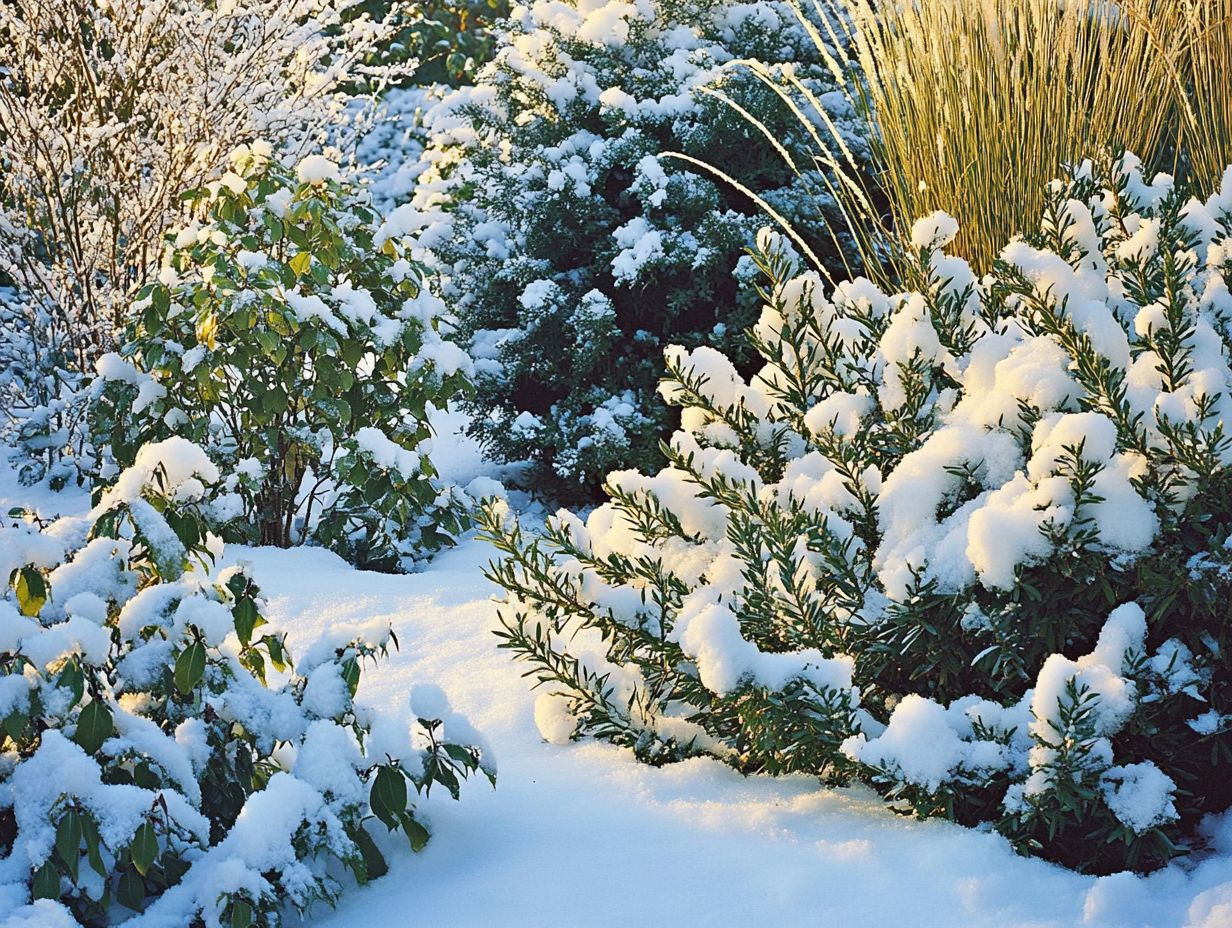
Protecting your plants from snow damage requires smart strategies that really work.
Techniques such as mulching, wrapping delicate plants, and thoughtfully positioning barriers can dramatically mitigate the potential impacts of heavy snow and ice accumulation.
By adopting these preventative measures, you can ensure that your flowering plants stay healthy and resilient throughout the winter months, ultimately enhancing the wildlife gardening ecosystem you cherish.
Preventative Measures and Techniques
Key preventative measures for safeguarding your plants from snow damage include wrapping sensitive specimens in burlap.
Applying a layer of mulch insulates roots against extreme cold. Winter garden maintenance is essential; prevent snow from compacting around your plants. This will protect their growth.
Learn what cold-hardy perennials need to boost their survival rate dramatically and ensure your garden flourishes come spring.
Consider using windbreaks to shield delicate plants from harsh winter winds that often intensify cold damage. Installing fencing or planting evergreens nearby provides an added layer of defense.
Regularly inspect your garden and gently brush off heavy snow accumulation to prevent branches from breaking under the weight.
Applying organic fertilizers in late fall boosts root health, enhancing resilience against winter stress. Proper pruning before the first frost improves airflow and reduces the chances of disease.
By implementing these strategies, you can effectively nurture your landscape throughout the colder months, ensuring it’s ready to thrive when spring arrives.
Cold Hardy Plants for Snowy Climates
Cold-hardy plants are critical for gardeners living in snowy climates as they endure harsh winter conditions and emerge thriving. Consider adaptable species like Achillea and Baptisia; these remarkable perennials not only bloom stunningly in spring but also exhibit drought tolerance, making them versatile choices for various garden designs.
By grasping the specific needs of these resilient plants, you can cultivate a vibrant landscape that remains lively year-round, even under full sun conditions.
Adaptable Species and How to Care for Them
Among the adaptable species that flourish in snowy climates, Nepeta spp. and Caryopteris shine for their resilience and versatility in various soil types, making them perfect choices for your low-maintenance garden.
Forsythia and Rhododendron offer stunning early spring blooms, while Siberian iris adds a touch of elegance to your landscape all requiring specific care to unlock their full growth potential.
To cultivate these plants effectively, it s essential to grasp their unique needs:
- Nepeta: Thrives in well-drained soil and should be watered sparingly, as it can handle drought conditions like a pro.
- Caryopteris: Loves full sun and appreciates a good pruning after blooming to encourage bushier growth.
- Forsythia: Prefers fertile soil with consistent moisture to reach its full glory.
- Rhododendron: Requires acidic conditions and benefits from a layer of mulch to keep moisture in check.
- Siberian iris: Adores damp environments and adds vibrancy to garden ponds or those inviting, moist corners.
Each of these species plays a vital role in creating a thriving ecosystem, attracting a variety of pollinators and enhancing habitat diversity in your garden.
Creating a Snow-Resistant Garden
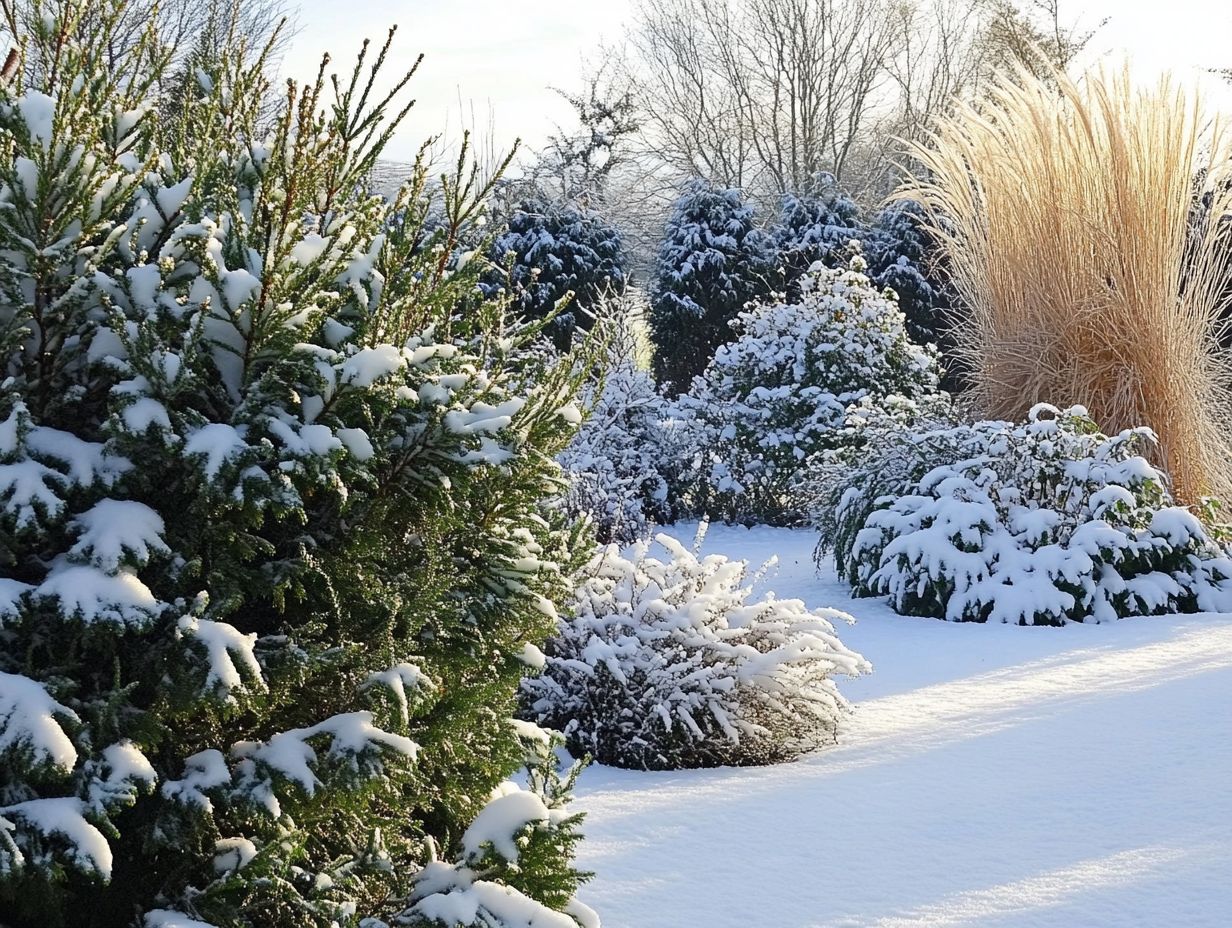
Crafting a snow-resistant garden requires artistry in garden design, focusing on resilient plants and sustainable practices that ensure not just survival but vibrancy through the winter months, integrating pollinator-friendly plants.
By thoughtfully selecting a blend of cold-hardy perennials, drought-tolerant species, and pollinator-friendly plants, you can enhance biodiversity while preparing your garden for the inevitable chill.
Incorporating snow-resistant elements into your landscape design creates a visually appealing aesthetic while fostering a sustainable environment that thrives throughout the year.
Start enhancing biodiversity today!
Tips for Design and Maintenance
Effective garden maintenance and thoughtful design are essential for cultivating a snow-tolerant garden that not only withstands winter but also bursts with color in the spring. Key strategies include:
- Planting in groups to create small areas with different climates,
- Ensuring adequate drainage to prevent snow accumulation, and
- Selecting vibrant foliage plants that add visual interest even during the stark winter months, enhancing the allure of urban gardening.
Incorporating evergreens and ornamental grasses elevates the aesthetic appeal. They also provide structure and texture throughout the colder season. Regular inspections of your plants during winter are crucial. Removing excess snow from branches can help prevent breakage.
Monthly checks on the thickness of your mulch are also important, as it insulates roots from the chill of frost.
Get ready for spring by planning a stunning blooming sequence with perennials that flower at staggered times to maintain a vibrant garden. By combining these thoughtful elements, you can transform a snowy landscape into a lively, dynamic space that delights year-round.
Frequently Asked Questions
What Plants Can Survive Heavy Snow?
Several plant species can survive heavy snow, including:
- Conifers such as spruce, pine, and fir
- Holly bushes
- Wintergreen plants
- Rhododendrons
- Winterberry plants
- Snowdrops
Do All Plants Die in Heavy Snow?

No, not all plants are unable to survive heavy snow. Certain species are adapted to withstand these harsh conditions.
What Makes These Plants Able to Survive Heavy Snow?
These plants have specific adaptations that allow them to survive heavy snow. For example, conifers have needle-like leaves that help them retain moisture and prevent damage from snow. Holly bushes have thick, leathery leaves for protection against freezing temperatures. Wintergreen plants grow low to the ground, allowing them to be covered by snow and shielded from harsh winds. Many flowering plants are also adapted to thrive in winter.
Are These Plants Limited to Cold Climates?
While these plants are commonly found in colder regions, they can also survive in milder climates with occasional heavy snow. It’s important to choose the right variety for your specific climate and provide proper care during the winter months.
Do I Need to Provide Any Special Care for These Plants During Heavy Snow?
If you live in an area with heavy snow, it’s important to prepare your plants for the winter season. This includes mulching around the base of the plant, providing extra water before the ground freezes, and protecting them from strong winds. Pruning before winter can help prevent damage from heavy snow accumulation.
Can I Grow These Plants in Containers?
Yes, most of these plants can be grown in containers as long as they have adequate drainage and are protected from extreme temperatures. Just be sure to provide proper care during the winter months to help them survive heavy snow.
Start your snow-tolerant garden today and enjoy the beauty it brings throughout the year!



